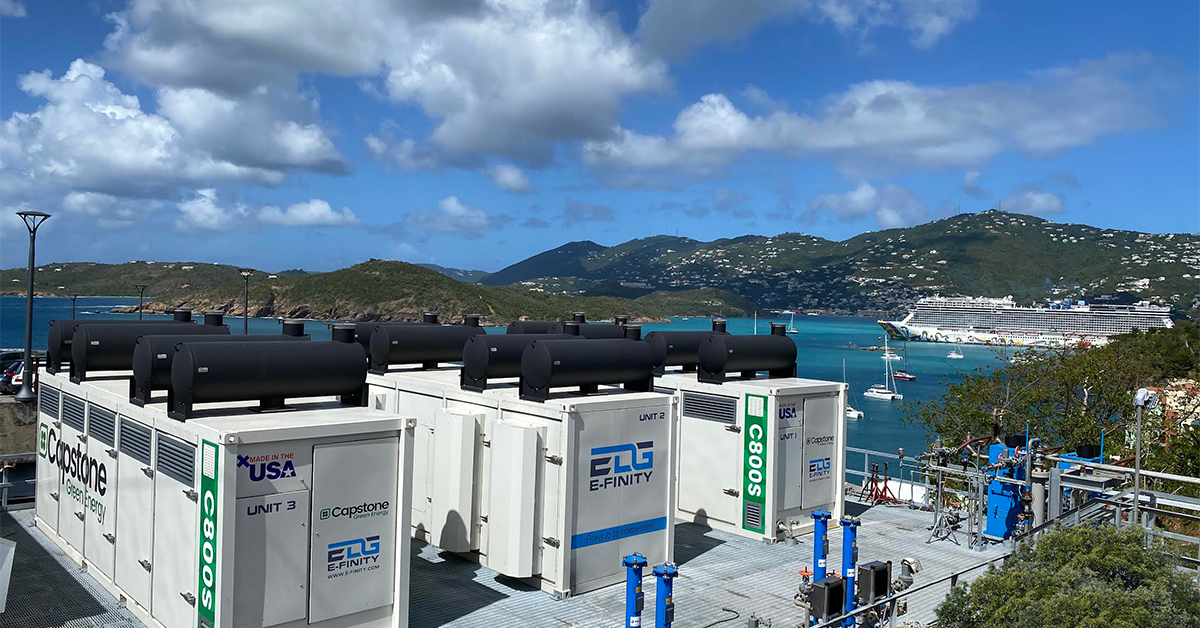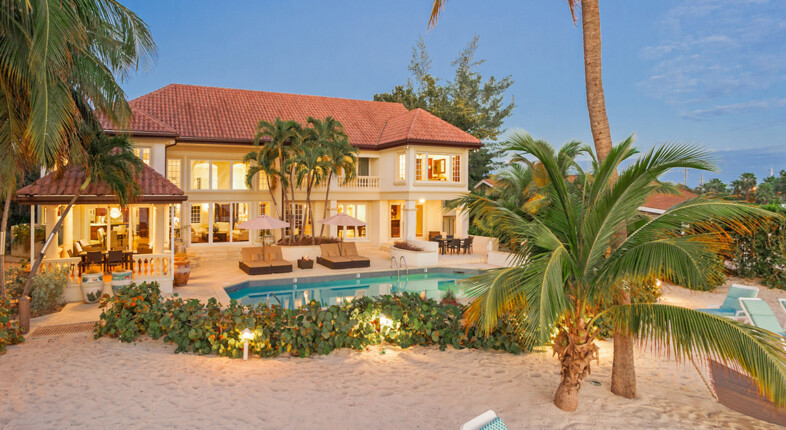Why — and How — Caribbean Resorts Are Generating Their Own Power
In the Caribbean, power isn’t just a utility — it’s a challenge. Frequent storms, aging grids, and volatile fuel costs have made reliable electricity one of the biggest operational challenges for hotels and resorts across the region. Increasingly, leading properties are taking control of their own energy futures, investing in onsite generation systems that can keep their lights on — and their guests comfortable — no matter what’s happening beyond the property line.
To understand why more Caribbean resorts are producing their own power and how these systems are reshaping the region’s hospitality landscape, Caribbean Journal Invest spoke with E-Finity Distributed Generation, a company that designs and installs integrated microturbine and energy systems across the region. In this conversation, E-Finity explains how onsite power helps resorts cut costs, improve resilience, and advance their sustainability goals — while ensuring that the guest experience never goes dark.
Why is it increasingly important for Caribbean resorts to generate their own onsite power?
The Caribbean’s power grids can be unreliable — aging infrastructure, frequent storms, and rising energy prices make it hard for resorts to depend solely on the utility. By producing their own power onsite, resorts can control costs, avoid disruptive blackouts, and deliver a consistent experience for their guests. Reliable energy isn’t just about keeping the lights on; it’s about keeping operations smooth and guests comfortable year-round.

How does onsite generation help hotels manage grid instability, blackouts, and high energy costs?
When you have your own power system, you’re not at the mercy of the grid. If a storm hits or there’s a regional blackout, the resort can continue operating as normal — guests won’t even notice. Plus, these systems often lower overall energy expenses by 20 to 40 percent. That’s because they’re designed for high efficiency, capturing and reusing waste heat for things like cooling and hot water, which makes a big dent in fuel and utility costs.
What kinds of technologies does E-Finity install for resorts, and how do they work together?
We use a combination of microturbines, absorption chillers, and smart control systems. The microturbines generate electricity and produce waste heat, which we then use to drive absorption chillers for cooling or to heat water. It’s an integrated system that makes the most out of every bit of fuel — cleaner, quieter, and far more efficient than traditional diesel generators.
Can you share a real example of a Caribbean property that has benefited from onsite generation?
Sure. About ten years ago, one resort in the Caribbean installed a 1.8 MW system with us. That system met 100 percent of the resort’s electric demand, cut their grid costs in half, and kept everything running during several major local blackouts. While nearby properties went dark, their guests stayed cool, connected, and completely unaware anything was happening offsite.
What kind of return on investment can resort owners typically expect, and over what timeframe?
Most resorts see payback in three to six years, depending on their fuel prices and whether they qualify for any local incentives. But it’s not just about cost savings — it’s also about reliability. When your power system runs 24/7 with minimal maintenance, that stability adds real value to your operation.
Beyond cost savings, what operational or guest experience advantages come from producing power onsite?
It’s peace of mind. When the utility goes down, the resort doesn’t skip a beat. The air conditioning stays on, the water stays hot, communications stay up — and guests are happy. It’s that level of consistency that builds trust and strengthens the resort’s reputation, especially during regional disruptions.
How does onsite generation fit into a resort’s sustainability strategy?
These systems are a great way to cut emissions and boost sustainability credentials. By using propane, natural gas, or even biogas, resorts can reduce their carbon footprint by up to 50 percent compared to grid power. That helps them qualify for green certifications and appeals to the growing number of eco-conscious travelers and corporate groups who prioritize sustainability when choosing where to stay.
Are there financing or partnership models that make these systems more accessible for independent resorts?
Absolutely. We know not every property can make a large capital investment upfront, so E-Finity offers several options — from turnkey financing and lease-to-own structures to energy-as-a-service agreements. In many cases, repayment is tied directly to the savings the system delivers, which makes it much easier for independent resorts to move forward.
What are the biggest regulatory or logistical challenges to implementing onsite power in the Caribbean?
Each island has its own regulations, and sometimes multiple agencies are involved. Interconnection standards, emissions rules, and fuel logistics can all add complexity. That’s where our experience really helps — we handle the permitting, system integration, and compliance process to make things as smooth as possible for the resort.
How do you see the future of resort energy evolving — toward hybrid microgrids, storage, or new clean technologies?
The future is definitely hybrid. We’re already seeing systems that combine microturbines with solar power, battery storage, and advanced controls — creating self-sufficient microgrids. As costs continue to come down, more resorts will move toward this model. It’s cleaner, more resilient, and ultimately gives resort owners total control over their energy destiny.


